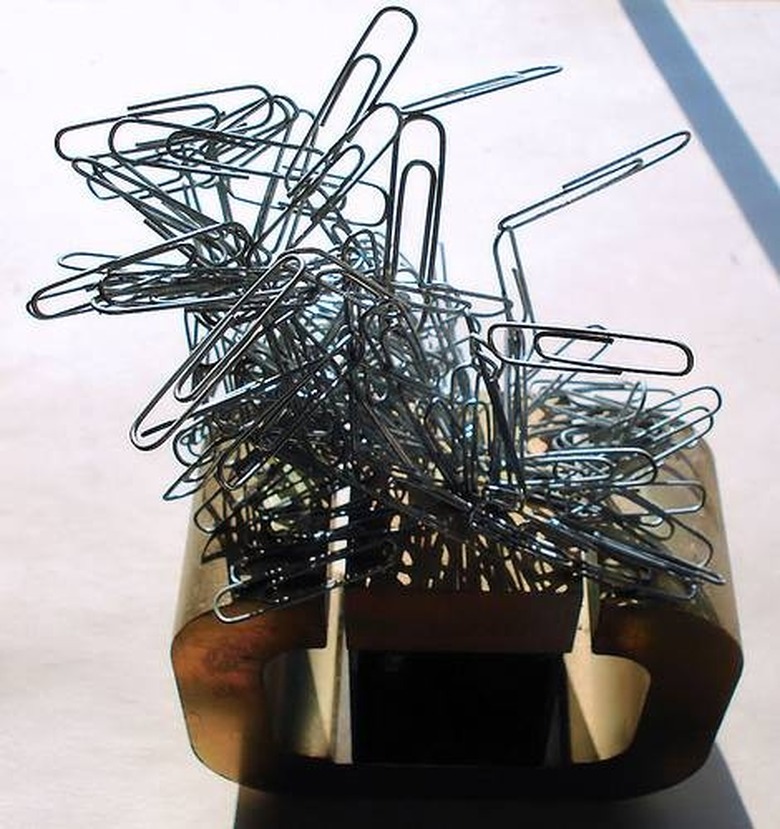How Do Magnets Attract & Repel?
Magnets are one of the rare items found in nature that are able to exert control over other objects without actually touching them. If you hold a magnet close to a certain type of object, it will either attract or repel it. This is due to the principles of magnetism.
To determine if an item has any magnetic properties, put it near iron filings or even a paperclip. If the iron is either attracted or repelled, the item in question can be considered a magnet. While it is possible to find certain types of rocks and minerals that are natural magnets, most magnets we see are manufactured.
The processes of magnetism occur on the atomic level. Magnets are surrounded by an invisible magnetic field that is made by the movement of electrons, the subatomic particles that circle the nucleus of an atom. The hyperactivity of these electrons gives magnets their ability to attract and repel.
Natural and manufactured magnets that have magnetic properties all the time are considered permanent magnets. All magnets have two ends, which are commonly referred to as north and south poles. The determining factor of whether a magnet attracts or repels is the pole. Magnets attract when a north pole is introduced to a south pole. If like poles are introduced, either north to north or south to south, the magnets repel.
Permanent magnets can also cause a reaction with nonmagnetic items, such as metals and even some liquids. These items are dubbed temporary or soft magnets. They have magnetic properties for only the period of time near the magnetic field of other magnets. These temporary magnetics, such as paper clips, hold either north pole or south pole properties depending on the characteristics of their electrons.
In addition to permanent and temporary magnets, a magnet can also be created by using electric current. These electromagnets are based on the principle that electric current has a small magnetic field around it when flowing through a circuit. The magnetic field isn't very strong when the wire is straight, but if you coil the wire it can create a working electromagnet. Electric motors use this concept to operate. A motor shaft uses a series of coiled wires connected to source of electricity to become an electromagnet. The shaft alternates between positive and negative polarity, becoming attracted and repelled to the permanent magnets near it. This causes the motor shaft to spin and operate. Every electric motor you see is based on this concept.
Magnets are used in many everyday items. The most common is the compass, which is able to produce a navigational direction by using the earth's natural magnetic field. Credit cards, including debit and ATM cards), use a magnetic strip to hold information that can be read by a specially designed card reader. Other items that use magnetic properties include refrigerator magnets, VHS tapes, audio cassettes, televisions, speakers and some computer-related items such as hard drives and floppy disks.
Cite This Article
MLA
Townsend, Kelly. "How Do Magnets Attract & Repel?" sciencing.com, https://www.sciencing.com/magnets-attract-repel-4566719/. 24 April 2017.
APA
Townsend, Kelly. (2017, April 24). How Do Magnets Attract & Repel?. sciencing.com. Retrieved from https://www.sciencing.com/magnets-attract-repel-4566719/
Chicago
Townsend, Kelly. How Do Magnets Attract & Repel? last modified March 24, 2022. https://www.sciencing.com/magnets-attract-repel-4566719/
